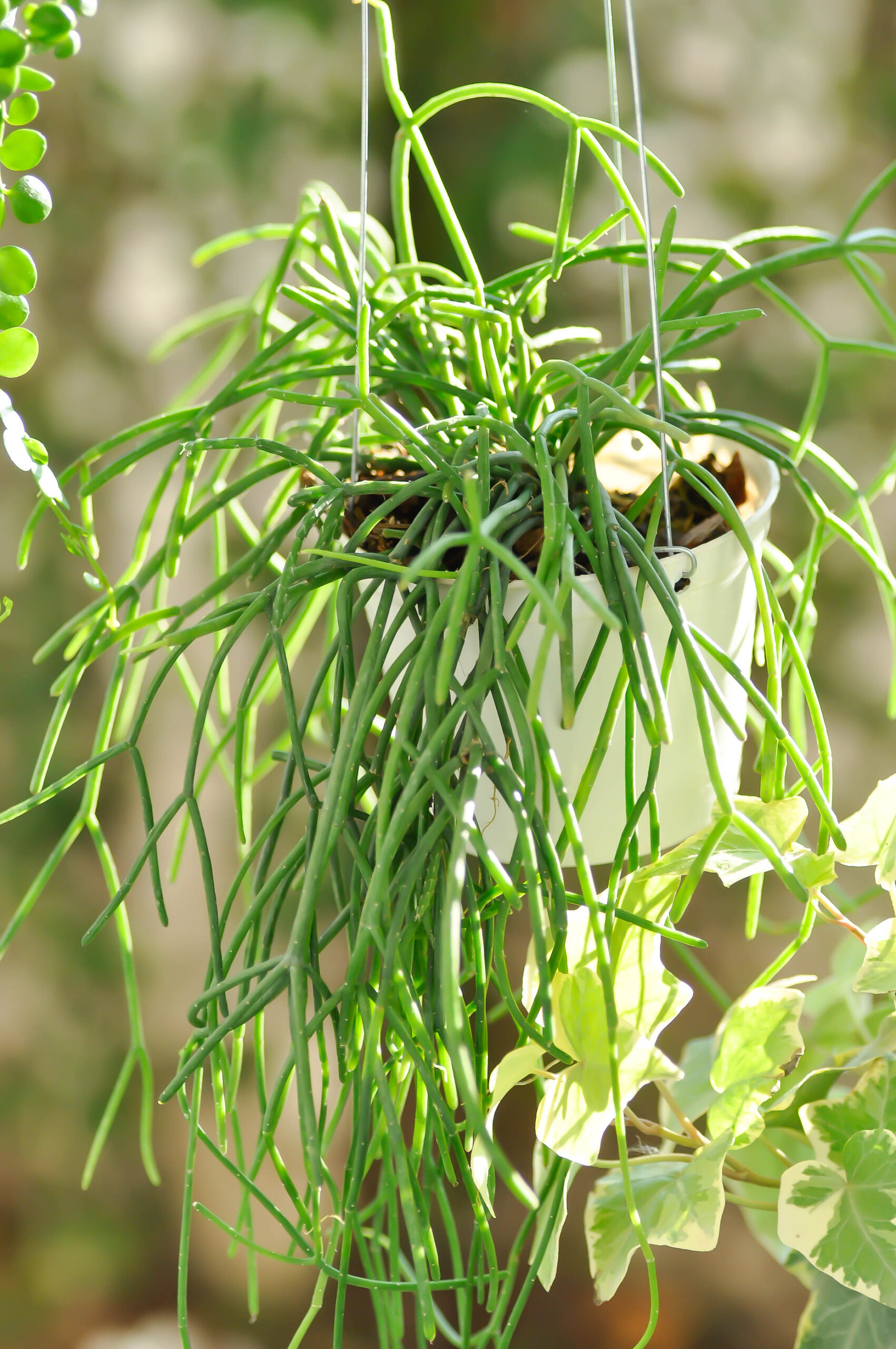Rhipsalis is an epiphytic cactus with thin, crisscrossing stems that weave in and out of each other. Rhipsalis’ unique branching habit gives it the nickname coral cactus; the weaving undulating pattern looks much like coral.
Because Rhipsalis is an epiphyte that commonly grows and hangs in trees, it is also sometimes called mistletoe cactus. Rhipsalis bears hair and bristles but no spines.
Rhipsalis bears small red, white, or yellow flowers that are sometimes have streaked throats or edges. Unlike many other cacti, Rhipsalis blooms in winter or early spring, not summer. Blooms last up to 8 days. Fruit that resembles berries appears after the flowers have faded.
Rhipsalis’ interesting cascading growth makes it natural for growing in hanging baskets. A hanging basket will best simulate the tree perches these epiphytic cacti enjoy in their native jungles.
Rhipsalis thrive in temperatures greater than 55ºF. It should be protected from breezes and cold temperatures.
Rhipsalis is a genus of about 60 species.
Get to know Rhipsalis
- Plant type: Cactus, epiphytic cactus
- Hardiness temperature: 50℉ (10℃)
- Optimal growing temperature: day, 70° to 85°F (21° to 29°C); night, 50° to 65°F (10° to 18°C).
- Shape and size: Thin crisscrossing stems weave in and out of each other; stems can grow to 10 feet (3m) long.
- Flowers: Inconspicuous flowers are red, white or yellow and occasionally streaked at the throats or edges
- Bloom time: Winter
- Common name: Coral cactus
- Genus name: Rhipsalis
- Family name: Cactaceae
- Origin: Central America

Planting Rhipsalis
- Grow Rhipsalis in partial shade.
- Indoors give Rhipsalis moderate sun from northern or eastern exposure. Rhipsalis does well under artificial light, needing 10 to 12 light-hours daily.
- Grow Rhipsalis in porous, sandy soil.
How to water and feed Rhipsalis
- Rhipsalis grows best in when the soil is kept barely moist. Keep the soil evenly moist. Mist daily. Humidity, 45% to 60%.
- Feed Rhipsalis every 2 weeks while in bloom, with mild low-nitrogen fertilizer.
Rhipsalis care
- Repot Rhipsalis each spring.
- Red, shriveled stem is an indication of too much sun.
- Rhipsalis must rest for 6 to 8 weeks each fall. In fall, set Rhipsalis in a cool place, 50° to 65°F (10° to 18°C), to encourage flower buds. Let the soil dry between moderate waterings; feed monthly.
- Rhipsalis can be propagated by cuttings or seed. Take cuttings in spring or summer.
Rhipsalis species to grow
- Rhipsalis baccifera (mistletoe cactus).
- R. cerescula (coral cactus, popcorn). Grows upright to 24 inches (61 cm) with slender, rounded stems branching at the tips and off to the sides; flowers are white, pink, or yellow; fruit is white.
- R. cribrata has erect stems when young, which droop as they lengthen; bell-shaped white flowers have red centers; fruit is red
- R. paradoxxa (link cactus).
- R. warmingiana.



